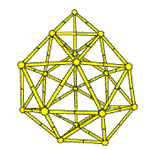Department of Chemistry
Document Type
Article
Date of this Version
October 2005
Abstract
Solid-state thermal neutron detectors are generally fabricated in a planar configuration by coating a layer of neutron-to-alpha converter material onto a semiconductor. The as-created alpha particles in the material are expected to impinge the semiconductor and create electron-hole pairs which provide the electrical signal. These devices are limited in efficiency to a range near (2-5%)/cm2 due to the conflicting thickness requirements of the converter layer. In this case, the layer is required to be thick enough to capture the incoming neutron flux while at the same time adequately thin to allow the alpha particles to reach the semiconductor. A three dimensional matrix structure has great potential to satisfy these two requirements in one device. Such structures can be realized by using PIN diode pillar elements to extend in the third dimension with the converter material filling the rest of the matrix. Our strategy to fabricate this structure is based on both “top-down” and “bottom-up” approaches. The “top down” approach employs high-density plasma etching techniques, while the “bottom up” approach draws on the growth of nanowires by chemical vapor deposition. From our simulations for structures with pillar diameters from 2 μm down to 100 nm, the detector efficiency is expected to increase with a decrease in pillar size. Moreover, in the optimized configuration, the detector efficiency could be higher than 75%/cm2. Finally, the road map for the relationship between detector diameter and efficiency will be outlined.



Comments
Proceedings of SPIE -- Volume 6013 Optoelectronic Devices: Physics, Fabrication, and Application II, Joachim Piprek, Editor, 601305 (Oct. 25, 2005). http://spiedl.aip.org/dbt/dbt.jsp?KEY=PSISDG&Volume=6013&Issue=1#P601305000001 ©2005 COPYRIGHT SPIE--The International Society for Optical Engineering. Used by permission.